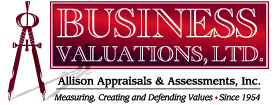Let's start with Millennials. They know we have been embroiled in Middle East conflicts since 1990, (if national interests since before World War I are excluded). No Millennials were directly exposed to a military draft, so few know the sacrifice of our families of those who volunteered and endured multiple deployments.
Millennials learned Boomers consume what wouldn't necessarily be called food. They prefer organic and having bottled water as they knew the hazards of not being a steward of our environment.
Yet, "clean energy" is often seen as code for limiting fossil fuel and coal production. This often aligns with the loss of higher paying blue collar jobs as manufacturing also suffered from our global economy. Clothing, electronics and furniture were produced overseas and returned in the form of cheaper goods benefitting those shopping at Walmart: The Peoples' Store.
Millennials know higher education costs have sky-rocketed while seeking opportunities allowing them to express individualism, not wanting "knowledge," not construction jobs their parents had.
Unenviably Boomers are wedged between their adult children and their parents. Some allowed their children to explore and find connection using tablets and phones, so the notion of "family" and "friends" is based upon "likes" not feelings. Selfies andentertainment-based reality is often preferred to real activities.
Fewer children, declining marriages and physical and emotional distance make healthy extended family maintenance more challenging which is compounded by infirmed parental care.
Our social contract seems confused. Few minded the trillions spent on military operations overseas while investment in our own citizens and national infrastructure continued to decline.
Many were so intoxicated by first home and McMansion ownership with ready capital to spend on discretionary items and debt-laden investments until the credit merry-go-round skidded to a halt. A large number of individuals lost their jobs and homes making any general economic recovery nothing close to the "borrowed" middle-class lifestyles until 2007 recession arrived.
Older boomers who may have benefitted from a decent retirement package sometimes express: "I got mine, you get yours" assuming the rules of the game have remained the same. They, too, felt the pain of retirement accounts losing value through little fault of their own with safer investments still yielding a fraction of a percent.
Let's put a finer point on the issue. Many Boomers are confronted with the reality of being age 50- to 70-somethings with too little too late in their savings. Some undoubtedly made poor choices in companions or careers. They're confronted with the stark choices meanwhile about 20% are reasonably comfortable and gaining more due to steady work and wealth earnings. Because most want to be affluent, they often look to blame others seen as "inferior".
The history of the down-trodden is not limited to the United States or the 21st Century. Hard work and climbing the economic ladder when most perceived there were rungs to a better life was the "square deal" most assumed was a basic right.
Candidly, this is not so much a Democrat versus a Republican thing, but "I will not be ignored" thing. Sadly, when confronted with little choices and less time, desperate folks take desperate measures. It's the difference between evolution and revolution.
Very few will look inward or stand before the mirror and think they had anything to do with their current plight. Fewer still are heard when making "shared sacrifice" pleas for the common good, as they often know neither their trials nor tribulations. This is why politicians and leadership are often mistrusted.
Preservation of their positions makes leading by example hard at best. So, a minority or a female leader creates disillusionment for some of somehow being lesser of a man. This is why faith, family, flag and firearms can mean so much to so many.
Find somebody who can harness the contrasts between "they" and "we" and they're provided a voice and a target. This provides power even when the promise and purpose seems suspect.
Whether arriving at this tipping point is through desire or indifference, we shall see. The remaining question, which also confronted our own founding fathers choosing a Republic versus a Monarchy for our fledgling nation as it is now 240 years hence will be: "Will absolute power build a bridge or a wall?"

